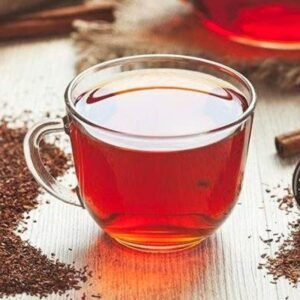Revitalize Your Sip: The Allure of Herbal Rejuvenating Tea
Herbal rejuvenating tea has experienced a surge in popularity among wellness enthusiasts, offering a rich blend of flavors and calming aromas.
This intriguing beverage features a variety of natural ingredients traditionally appreciated for their soothing and revitalizing characteristics.
When we speak of “rejuvenation” in this context, it refers to the sensory and comforting experience these teas offer—helping individuals find balance and relaxation in today’s fast-paced world.
As more people embrace mindful lifestyles, herbal teas have become a beloved daily ritual. Unlike traditional teas that contain caffeine, herbal varieties are typically made from herbs, flowers, and spices—making them naturally caffeine-free and enjoyable at any time of day.
Their aromatic and flavorful profiles appeal to a wide audience, inviting exploration of blends that reflect personal preferences and routines.
Common ingredients in herbal rejuvenating teas include chamomile, ginger, and hibiscus—each long valued in traditional practices for their unique characteristics.
These ingredients come together to create infusions that are both flavorful and comforting. Some blends are marketed as part of wellness or lifestyle routines, including those focused on balance, mindfulness, or weight-conscious living.
In the following sections, we’ll explore the components behind these intriguing brews and what makes them enjoyable and satisfying.
Key Ingredients and Their Characteristics
Herbal rejuvenating tea brings together a variety of natural ingredients, each offering distinctive aromas, flavors, and traditional associations. Let’s explore five commonly used components:
- Orange Peel: With its vibrant citrusy flavor, orange peel adds a refreshing brightness to the tea. It’s often included for its aromatic appeal and is a staple in many herbal blends.
- Bergamot: Known for its floral, slightly spicy flavor, bergamot lends a unique depth to herbal teas. Its pleasant scent and taste have made it a favorite in traditional tea blends.
- Honeysuckle: Sweet and floral, honeysuckle adds a delicate note to the infusion. It has been used in traditional remedies and is admired for its light, fragrant qualities.
- Ginseng: Recognized for its earthy flavor, ginseng is a popular inclusion in herbal teas. It is often associated with traditional wellness practices and is favored in blends designed for invigorating experiences.
- Chrysanthemum: With a subtle sweetness and floral aroma, chrysanthemum tea is commonly enjoyed in East Asian cultures. It’s typically associated with moments of calm and mindfulness.
Together, these ingredients create a balanced and enjoyable herbal tea experience, perfect for those looking to unwind or enjoy a flavorful, caffeine-free beverage.
Brewing the Perfect Cup of Herbal Rejuvenating Tea
Creating your ideal cup of herbal tea starts with quality ingredients. A well-crafted blend might include herbs like chamomile, peppermint, ginger, or lemon balm. For a single serving, use about one teaspoon of dried herbs or one teabag per 8-ounce cup of hot water.
Begin by boiling fresh, filtered water. For most herbal teas, a temperature between 190°F and 212°F (88°C to 100°C) works well. Pour the hot water over your tea and let it steep for 5 to 10 minutes, depending on your preferred strength and flavor.
Enhancing the flavor can be as simple as adding a drizzle of honey, a splash of lemon juice, or a touch of cinnamon or mint. These additions offer extra depth and can turn a simple cup into a comforting ritual.
Once brewed, take a moment to enjoy the tea’s aroma and color. Drinking it from a favorite mug or teacup can turn a routine moment into a relaxing, sensory experience. With thoughtful preparation, herbal rejuvenating tea becomes more than just a beverage—it becomes a daily ritual of comfort and personal care.
Incorporating Herbal Tea into Your Daily Routine
Integrating herbal tea into your daily regimen can enhance both your physical health and mental clarity. One effective strategy is to start your day with a warm cup of herbal rejuvenating tea. Selecting a blend that incorporates ingredients like peppermint or ginger can invigorate your morning and prepare you for the day ahead. This warming beverage acts not just as a gentle wake-up call for your body but also as a refreshing alternative to traditional caffeinated drinks.
Mid-morning is another ideal time to enjoy a cup of weight loss tea. Choosing a formulation rich in metabolism-boosting herbs, such as green tea or oolong, can support your weight management goals effectively. Sipping on this slimming tea during a break can encourage mindfulness—an opportunity to step back, breathe deeply, and refocus your energy. This approach not only nourishes the body but also promotes a more mindful and balanced lifestyle.
As the day progresses, consider herbal infusions as a soothing alternative to sugary snacks. Instead of reaching for calorie-dense options, replace them with a cup of herbal tea that can help curb cravings and support digestion. Teas with digestive herbs like chamomile or fennel are particularly beneficial and can be easily prepared in advance for convenience throughout the day.
Lastly, incorporating herbal tea in your evening routine can promote relaxation and prepare you for a restful night. A calming blend that includes valerian root or lavender can serve as a perfect wind-down ritual, encouraging tranquility and good sleep hygiene. Engaging in a few moments of mindful sipping before bed not only enhances the tea-drinking experience but also contributes positively to overall wellbeing. Emphasizing the importance of these small rituals can help solidify herbal tea as an integral part of your holistic lifestyle








Reviews
There are no reviews yet.